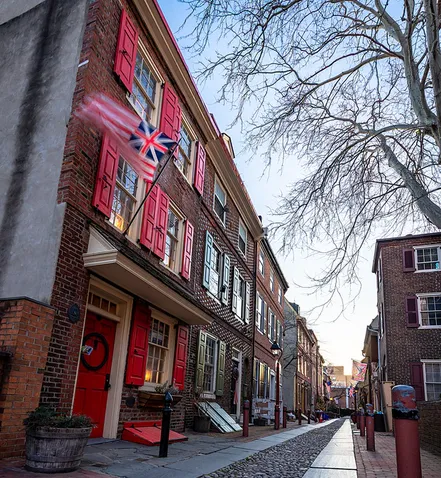Independence Hall
Independence Hall is a historic building in Philadelphia's Old City. It was built between 1732 and 1753. It was designed by architect Edmund Woolley, who was born in England. The design was influenced by the architectural styles of the era, particularly the Georgian style. It was commissioned by the colonial government of Pennsylvania and was later occupied by the state government. Other historic buildings in the area include Congress Hall and Old City Hall. The American Philosophical Society was held in the Philosophical Hall on Independence Square. The Liberty Bell is also located in Independence Mall.
The tour of Independence Hall starts with a brief history lesson. You'll see the Senate and House of Representatives. You'll learn about the legal process that was taking place during this time. You'll also get to see where George Washington and John Adams were sworn in as presidents. You'll also get to see the Assembly Room, where the Constitution was debated and ratified.
Betsy Ross House
While visiting Philadelphia, you should not miss the Betsy Ross House, where the first American flag was sewn. The home of the famous seamstress and flag maker Betsy Ross is now a historic landmark. Today, visitors can learn more about her life and career and see how she influenced American history.
Betsy Ross House is one of the most historic buildings in Philadelphia, dating back to the early eighteenth century. Initially built in 1740, it was a home for local upholsterer Elizabeth "Betsy" Ross during the War of Independence. Her work during that time included sewing blankets for the Continental Army and presenting Washington with the first American flag. While it is unclear whether she sewed the flag, the house has been restored and is now a museum.
Carpenter's Hall
In Philadelphia's Old City, visitors can experience the birthplace of American independence at Carpenters' Hall. Located in the heart of the city, this historic site was the first place where the colonies met in an attempt to gain independence. It served as a meeting place for the First Continental Congress and later as a bank for the United States.
The building was purchased in 1768 and was built by Robert Smith. It was designed in Georgian style, modeled after town halls in Scotland and Palladian villas in Italy. During the Revolution, the lower floor of Carpenters' Hall was used as a hospital. The building also served as the first bank of the United States in 1791. It continued to serve as a place of civic and economic life until 1856 when it was renovated. Today, it is a part of Philadelphia's Independence National Historical Park.
Assembly Room
The Assembly Room in Philadelphia's Old City is a historic building with a rich history. The building dates back to 1732 and was completed in 1753. It was the location of the Liberty Bell. It has undergone several restorations over the years, including those done by John Haviland in the 1830s and the National Park Service in the 1950s. In 1776, Philadelphians debated the Declaration of Independence, which became the venue for the signing of the Constitution. Today, the Assembly Room interprets the events of that year and discusses the spread of democracy in America.
The Assembly Room was originally the state capitol, but the city of Philadelphia purchased it in 1818. In 1824, the city hosted the Marquis de Lafayette. Philadelphians welcomed Lafayette as the country celebrated its independence, and the committee preparing the visit named the room "hall of Independence." In the 1850s, the building attracted national attention. After the 1854-55 redecoration, the Assembly Room was renamed Independence Hall, and it became a symbol of the American revolution.
Elfreth's Alley
Located in the Old City of Philadelphia, Elfreth's Alley is the oldest residential street in the United States. The neighborhood is home to more than thirty-two historic houses in Federal and Georgian styles. The area is also a popular destination for photographers.
Visitors can enjoy the architecture and history of the neighborhood. Its homes are typical of the Philadelphia period, reflecting a mix of Continental and British architecture. The alley's residents are proud to live and work in the neighborhood. Many of the homes are decorated with historical flags.
Independence National Historical Park
If you're in the Philadelphia area, you shouldn't miss the Independence National Historical Park, a federally protected historic district. It preserves several sites associated with the American Revolution and the nation's founding. The park is one of the most popular tourist destinations in the United States.
Located in the heart of Philadelphia, this national park has a wealth of history to explore. Several sites were associated with the American Revolution, including the Declaration of Independence and the U.S. Constitution. The Park was established in 1956 and is operated by the National Park Service.
